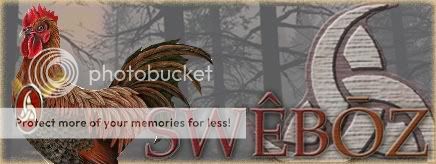The following passage is pasted directly from the wiki article on "Germanic peoples". I think it may lay interesting groundwork for establishing a Sweboz reform date.
"The development of La Tene culture extended to the north around 200-150 BC, including the North German Plain, Denmark and Southern Scandinavia".
"In certain cremation graves, situated at some distance from other graves, Celtic metalwork appears: brooches and swords, together with wagons, Roman cauldrons and drinking vessels. The area of these rich graves is the same as the places where later (first century AD) princely graves are found. A ruling class seems to have emerged, distinguished by the possession of large farms and rich gravegifts such as weapons for the men and silver objects for the women, imported earthenware and Celtic items".
Sources as follows,
Parker Pearson 1989:202
Runes around the North Sea and on the Continent AD 150-700 - Looijenga, Jantina Helena - II.2, From the pre-Roman Iron Age to the late-Germanic Iron Age, University of Groningen, 1997.
The dissertation piece written by Dr. Jantina Helena Looijenga goes on to state,
"This process continued throughout the beginning of this era and is especially noticeable in Jutland and on Funen. The first historical contacts with the Romans took place during this period. The journey of the Cimbri and Teutons from Jutland, at the end of the second century BC, possibly resulted from different motives: e.g. internal struggles for power, overpopulation, climatic changes and long-distance trade, which included the import of prestige goods.
The pre-Roman Iron Age Germanic society hardly knew any private property (perhaps apart from cattle), and certainly no privately owned land, since this was common property (Hedeager 1992a:245). The agriculture of the celtic fieldsystem could not expand much and an increase of agricultural production was not possible, which put a strain on society. The first four centuries AD saw a reorganisation of the villages, the redistribution of land, improved tools and a larger produce of the fields.
Hedeager (1992a:245) conjectures that the early weapon deposits, and perhaps also the bog offerings of people in the north of Jutland, bear witness of internal conflicts. The differentiation process that may have started at around 150 BC continued till the development of royal power centres centuries later (Hedeager 1992a:244ff.).
With the increase of the number of landowners (and private property), new tensions and conflicts could originate within the community. The accumulation of property produced a new elite. Social status became important, which was expressed by the possession of prestige
goods (Hedeager 1988a:137ff.). Literacy, used for spiritual or profane purposes, may be expected to have developed among high-placed persons or privileged groups".
The dissertation is available as a pdf download if anyone is interested in reading it in full. A simple google search should suffice.





 Reply With Quote
Reply With Quote


 thanks to you guys who spend time carefully supporting your arguments with real evidence and clear logic. This thread does much to support the continued development and evolution of the Sweboz faction, so great job people! Keep up the good work done by supplying proof whether it be logic (as most of the time we must go on with so few sources) or actual references, for these kinds of changes we're actually noting to consider/propose to the team, such as with the new cavalry and reform. The Sweboz have been neglected in the consuming greatness of so many other great elements of EBness but not for long!
thanks to you guys who spend time carefully supporting your arguments with real evidence and clear logic. This thread does much to support the continued development and evolution of the Sweboz faction, so great job people! Keep up the good work done by supplying proof whether it be logic (as most of the time we must go on with so few sources) or actual references, for these kinds of changes we're actually noting to consider/propose to the team, such as with the new cavalry and reform. The Sweboz have been neglected in the consuming greatness of so many other great elements of EBness but not for long! 
 Good news! Thanks to the great generosity of Shigawire, I will have additional resources so that I may truly begin translating/reconstructing ProtoGermanic for the Sweboz voice mod
Good news! Thanks to the great generosity of Shigawire, I will have additional resources so that I may truly begin translating/reconstructing ProtoGermanic for the Sweboz voice mod











Bookmarks